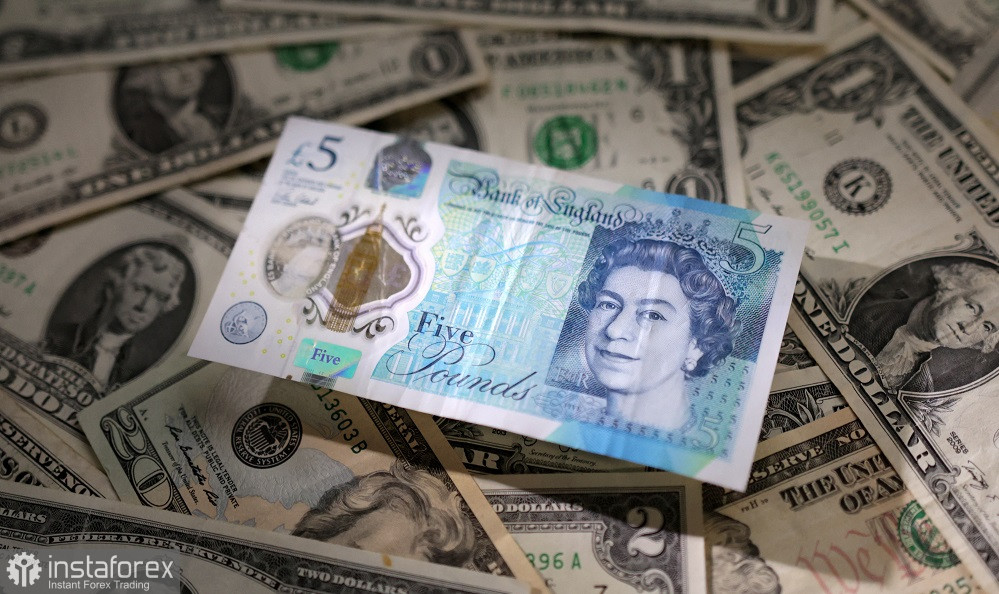The pound, paired with the dollar, updated its yearly high today in response to the inflation report. For the first time since July 2023, the GBP/USD pair entered the 1.30 area. Traders are determined to hold this price area. At least, the current fundamental background supports this.
Amid the pound's strengthening, the US dollar index continues to decline. Today, it reached 103.36, the lowest level since March 20. Although the retail sales volume data in the US, published yesterday, came out in the "green zone," they reflected a lack of dynamics. In particular, the overall retail sales volume in June showed zero growth. This indicator did not play a decisive role for the greenback but added to the overall picture.

"Dovish" expectations regarding the Fed's future actions intensified after yesterday's release. According to the CME FedWatch tool, the probability of a 25 basis point rate cut at the September meeting increased to 93.5%. The market is almost certain that the US regulator will begin to ease monetary policy in early autumn. The contradictory Powell, who refused to confirm such intentions (but did not exclude such a scenario), did not convince traders that the Fed would not take the first step in this direction in September.
The pound has "spread its wings amid the greenback's overall weakness." And there are objective reasons for this. Today's report, if not canceling the August rate cut, at least allows the Bank of England to delay easing monetary policy until autumn. This crucial release tilted the scales in favor of a wait-and-see position.
So, according to the published data, the overall consumer price index in June remained at the May level, that is, at 2.0% year-on-year. The indicator has been gradually decreasing since April 2023, and from February 2024 to May (inclusive), it showed a confident and consistent downward trend, decreasing from 4.0% to 2.0%. According to forecasts, the index was expected to decrease to 1.9% in June but remained at the two-percent level.
The core consumer price index also remained unchanged, standing at 3.5% year-on-year (the same level as in the previous month).
The retail price index (RPI), which employers use to discuss wage issues, decreased minimally to 2.9% from the previous value of 3.0%. However, CPI inflation in the services sector remains high at 5.7% year-on-year. This is a real "headache" for the English regulator, especially for the "dovish wing" of the central bank. Such growth rates are uncomfortable when making a rate-cut decision.
What does the inflation report generally indicate? First, the Bank of England will likely keep all monetary policy parameters unchanged in August and postpone the rate cut decision to autumn (that is, to September or November). Moreover, the latest data on the country's economic growth also allow for delaying policy easing.
I remind you that the UK's GDP volume increased by 0.4% month-on-month in May, following zero growth in the previous month. The indicator came out in the "green zone" as most experts expected more modest growth – up to 0.2%. The British economy grew by 0.9% every quarter, with a forecast of 0.7% growth. Other components of the release also favored the British currency. Industrial production volume increased by 0.2% month-on-month in May after a sharp decline (0.9%) in the previous month. Year-on-year, the indicator also showed positive dynamics, rising by 0.4% after two months of decline (in the previous month, the volume decreased by 0.7%).
The August meeting of the Bank of England will occur on August 1, which means that the regulator's members must operate with the above data. Data on CPI growth for July and GDP growth for June will be published after the August meeting. Therefore, it can already be assumed that the central bank will keep the rate at the current level in August. It is also worth recalling a recent statement by the Bank of England's chief economist, Huw Pill. According to him, core inflation in the UK remains "uncomfortably persistent" as price growth in the services sector and wage growth remain close to the six-percent level.
These words were said last week, before today's release. Now, Pill's concerns are justified: stubborn inflation in the services sector remained near the 6% target (5.7%).
The average earnings level (including bonuses) remained at the previous month's level – 5.9% in May, while most analysts predicted a decline to 5.7%. Without bonuses, the indicator also remained at the previous level, that is, at 6.0%.
Thus, today's report on British inflation growth followed a relatively good GDP growth report, allowing the English regulator to maintain a "theatrical pause." These prospects have strengthened the pound across the market, especially against the dollar, which is vulnerable.
From a technical perspective, the GBP/USD pair is either at the upper or between the middle and upper lines of the Bollinger Bands indicator on the H1, H4, D1, and W1 timeframes. Additionally, the Ichimoku indicator has formed one of its strongest bullish signals on the daily and weekly charts, the "Parade of Lines." Therefore, any corrective pullbacks should be used to open long positions with the first and currently main target of 1.3100.
 English
English 
 Русский
Русский Bahasa Indonesia
Bahasa Indonesia Bahasa Malay
Bahasa Malay ไทย
ไทย Español
Español Deutsch
Deutsch Български
Български Français
Français Tiếng Việt
Tiếng Việt 中文
中文 বাংলা
বাংলা हिन्दी
हिन्दी Čeština
Čeština Українська
Українська Română
Română

